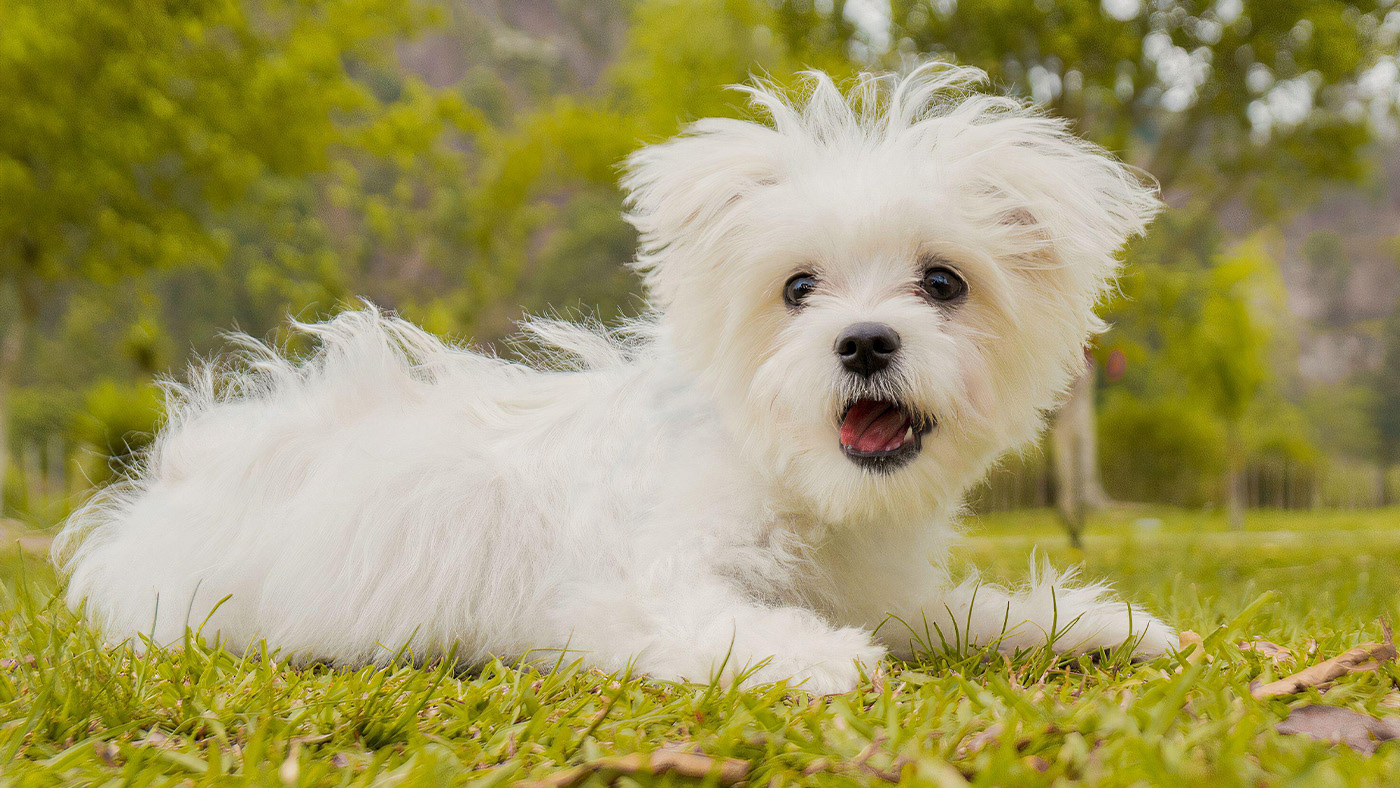10 signs your dog is happy
Dogs may not literally talk to us, but their joyful behavior speaks volumes. Here’s how to know if your dog is happy
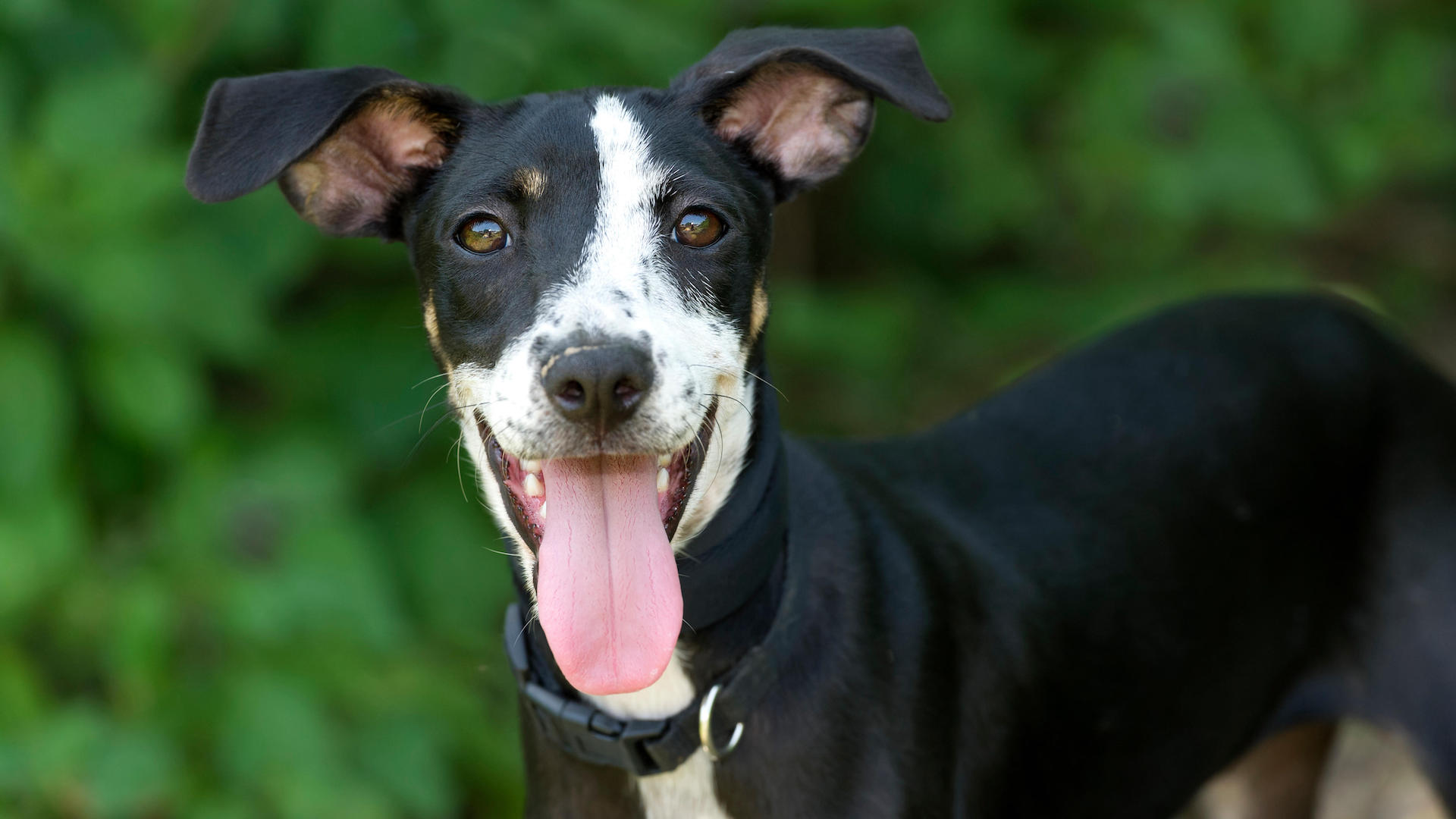
Wondering how to know if your dog is happy? You've come to the right place. Our dogs may not speak our language, but they have plenty of avenues of communication to express their emotions – whether it’s delight, anxiety, or depression.
The signs of happiness are both easy to read and wonderful to see, whether it’s a wagging tail, zoomies round the yard, or healthy sleeping patterns, dogs have a whole repertoire of behaviors that shout out joy. We just need to learn how to read dog body language.
So, how to know if your dog is happy and truly living their best life? Let’s take a look at Dr Rebecca MacMillan’s 10 signs your dog is feeling, as we call it, “happy”.
10 signs your dog is happy
As pet parents, understanding these signals isn’t just heartwarming, it’s essential for our pups to flourish and part of being the best dog owner. Plus, there are several things we can do to keep our dogs happy and even more ways of boosting your dog’s happiness.
Of course, we shouldn’t presume dogs share the same emotions as we do. As vet Dr MacMillan says: “While we can never truly know what emotions animals feel and how they compare to human ones, we can safely say that dogs certainly put on a good show of being happy.
“Whether this is truly happiness as we feel it, we can’t say for sure. But certainly, a content, relaxed, and secure dog will show it in certain ways.”
1. Relaxed body language
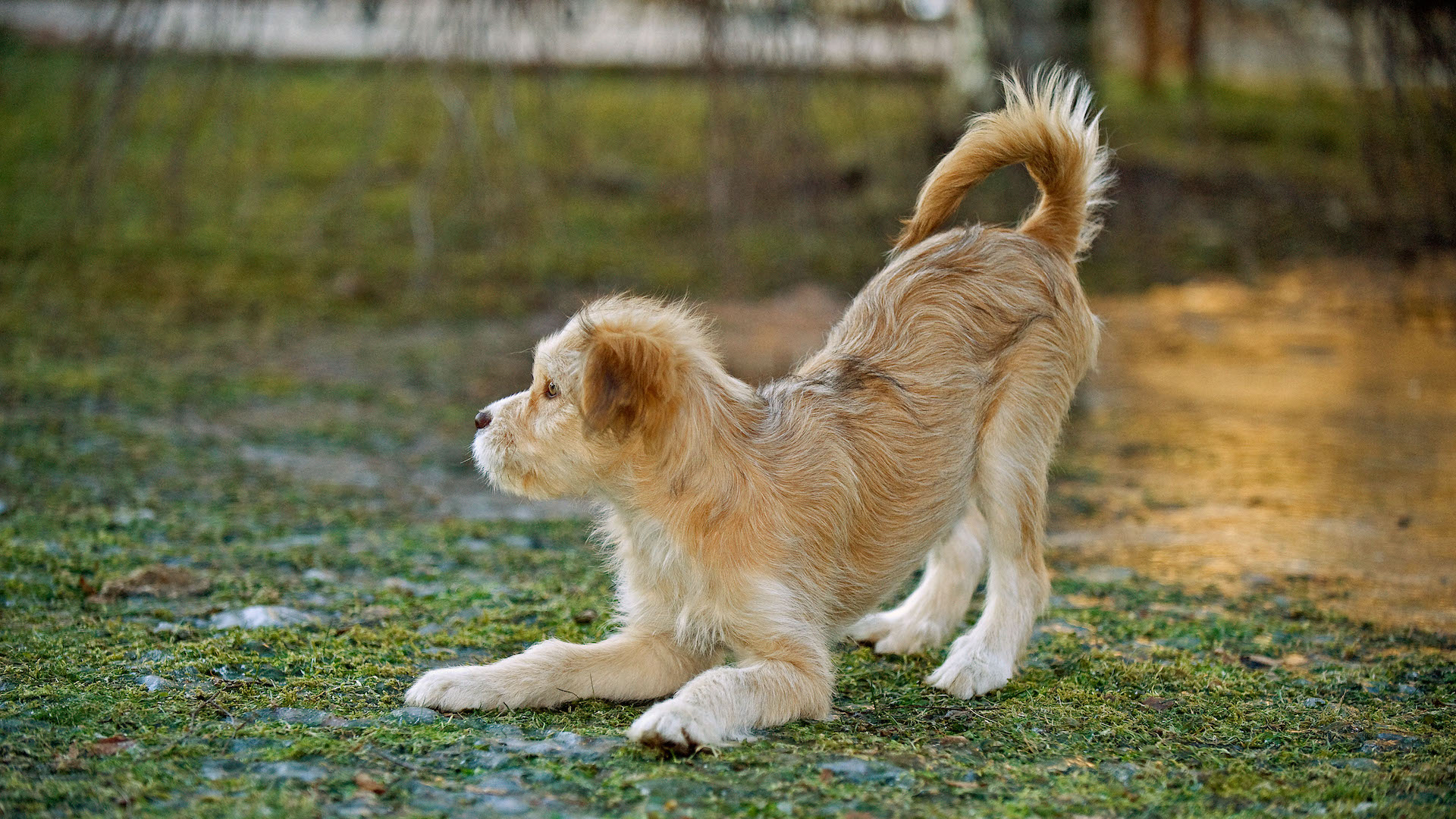
Dr MacMillan explains that relaxed body language is a major sign that your dog is content. No tension means no anxiety; instead, they are feeling open-minded and comfortable, not on high alert.
PetsRadar Newsletter
Get the best advice, tips and top tech for your beloved Pets
“Happy dogs are curious and sniffing their surroundings, and their movements are loose, she says. “They may even do a play bow stance as a signal that they want to play with you. This involves lowering their chest on the floor, leaving their bottom up in the air.”
2. Waggy tail

A wagging tail is probably the number one signal that most people recognise as indicating a happy dog. Dr MacMillan says that the tail should be loose, not taut.
“This is often wagged slowly from side to side, and is very different to the fast, tense and upright wag that we might see in an aggressive dog,” she explains.
3. Soft eyes
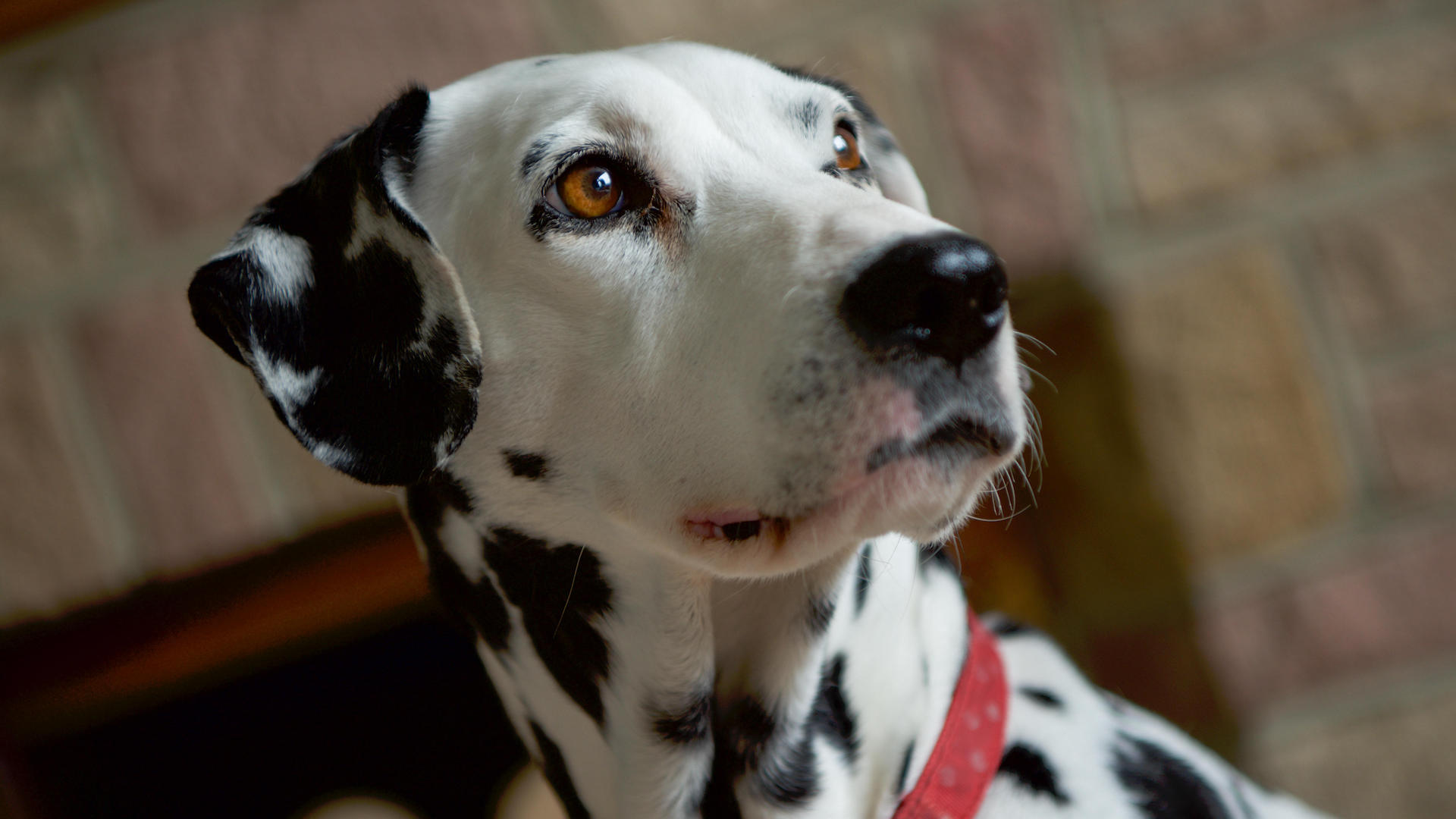
It’s hard to feel happy if our jaw is clenched, our face is fixed in a frown, and our eyes are narrowed. The same applies to canines.
“A happy dog has calm facial features, with relaxed ears and soft, gazing eyes,” says Dr MacMillan. “They may also have an open mouth with a loose tongue.
“Your dog may also stare at you in a relaxed manner, blinking frequently.”
Ahhh, the puppy-dog eyes...
4. Good appetite
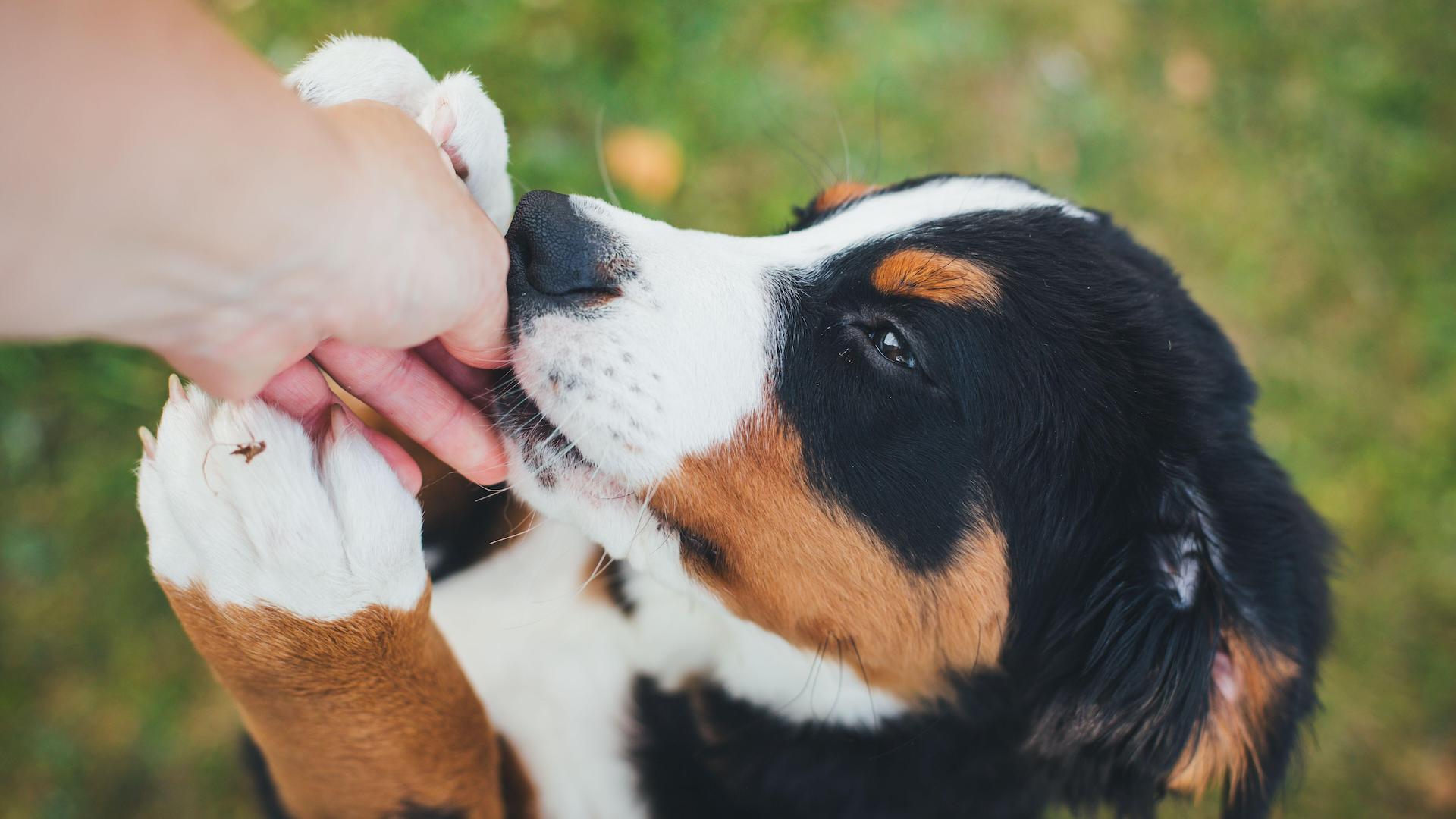
Many animals lose their appetite when they are nervous or under stress. It’s due to our primal fight-or-flight response kicking in, telling our body to be ready for danger, rather than anticipating a slap-up meal of the best dry dog food.
If your dog is eating well and keen to accept treats from you, he’s probably on an even keel and feeling that all is well with the world. If he’s too distracted for treats or leaving his food uneaten, he could be feeling anxious or sick.
5. Listens well
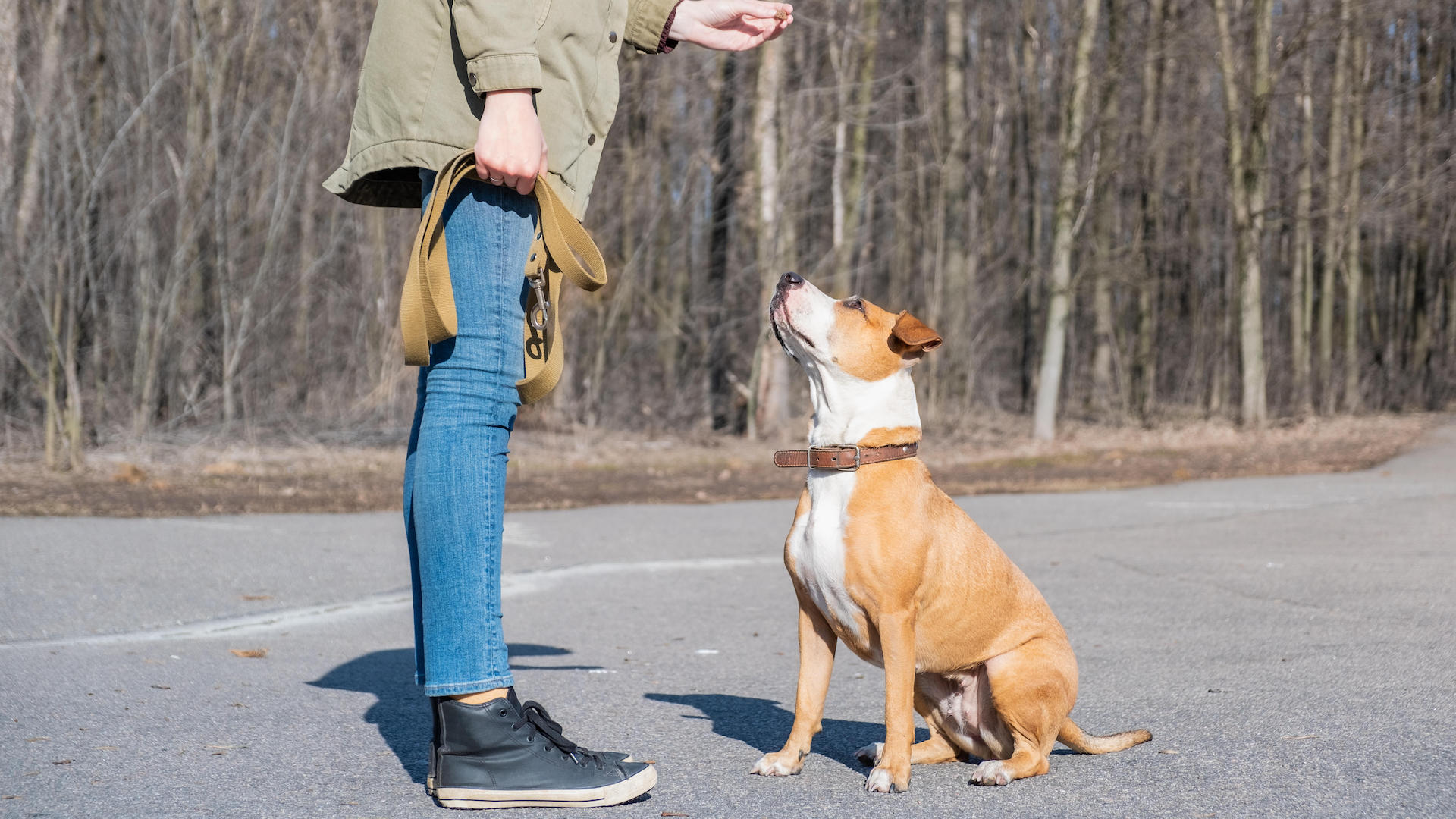
A dog that doesn’t obey commands or is tricky to train is not necessarily unhappy. However, a relaxed and contented dog is more likely to be in a position to listen to you and follow your cues.
A distracted dog is concerned about other priorities, whether it’s the excitement of chasing prey or a potential threat. Try to pick your training sessions in a place where he’s not on high alert and can give his full concentration, for a satisfying and ultimately happy outcome.
Likewise, a dog showing separation anxiety, or excessive chewing and destructive tendencies, is communicating that something is not right. He is not content in certain situations, as these are signs of stress or boredom in dogs.
6. Keeping company
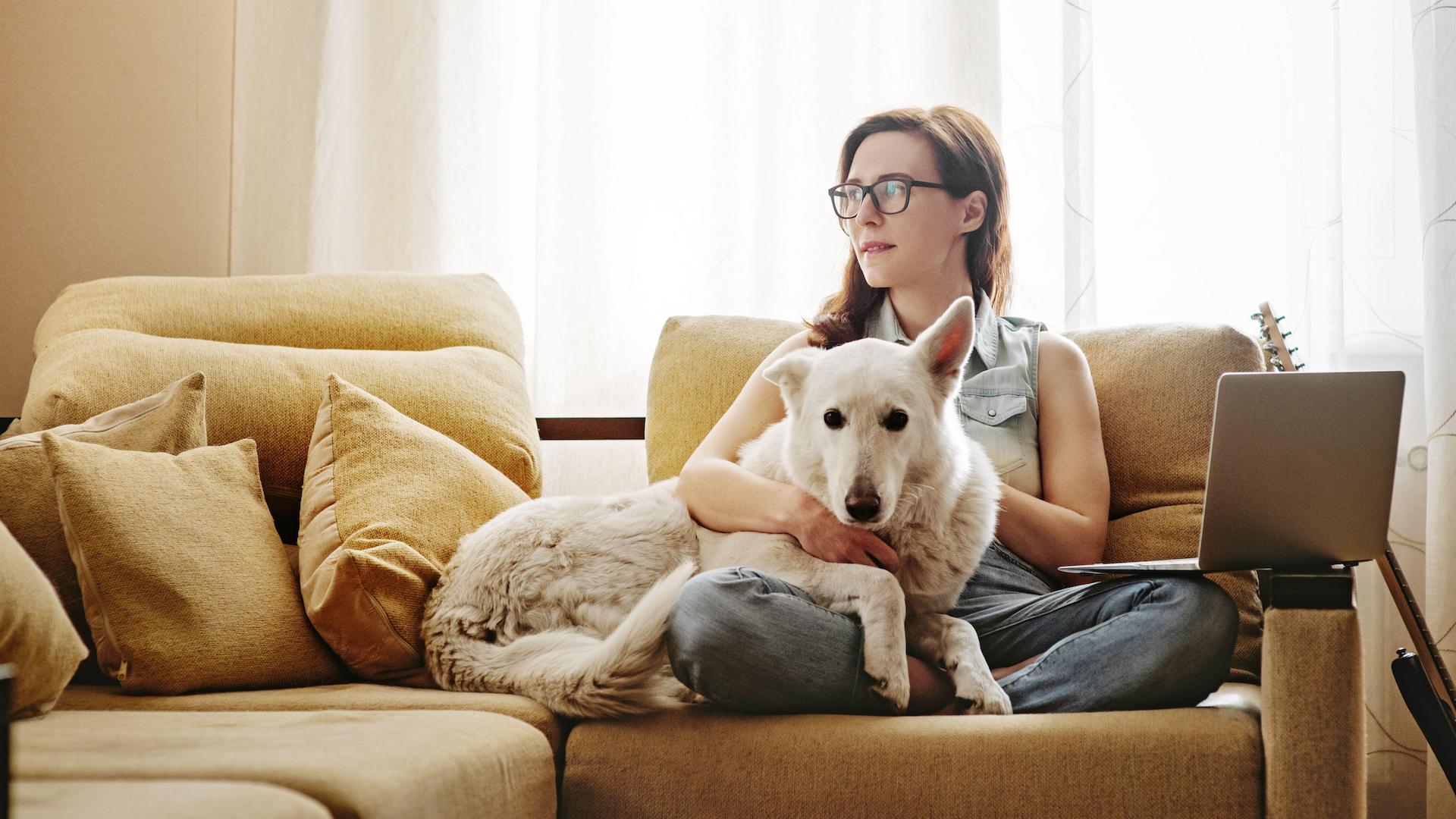
Dogs are man’s best friend, so the adage goes. Each one is integral to the other’s happiness and wellbeing.
Dr MacMillan says: “A happy dog wants to be in your company, whether that’s staying close by in the garden, resting in the same room as you, or perhaps following you around the house.
“They might also be trying to engage with you, for some cuddles or a play.”
Happy dog equals happy human.
7. Physical touch
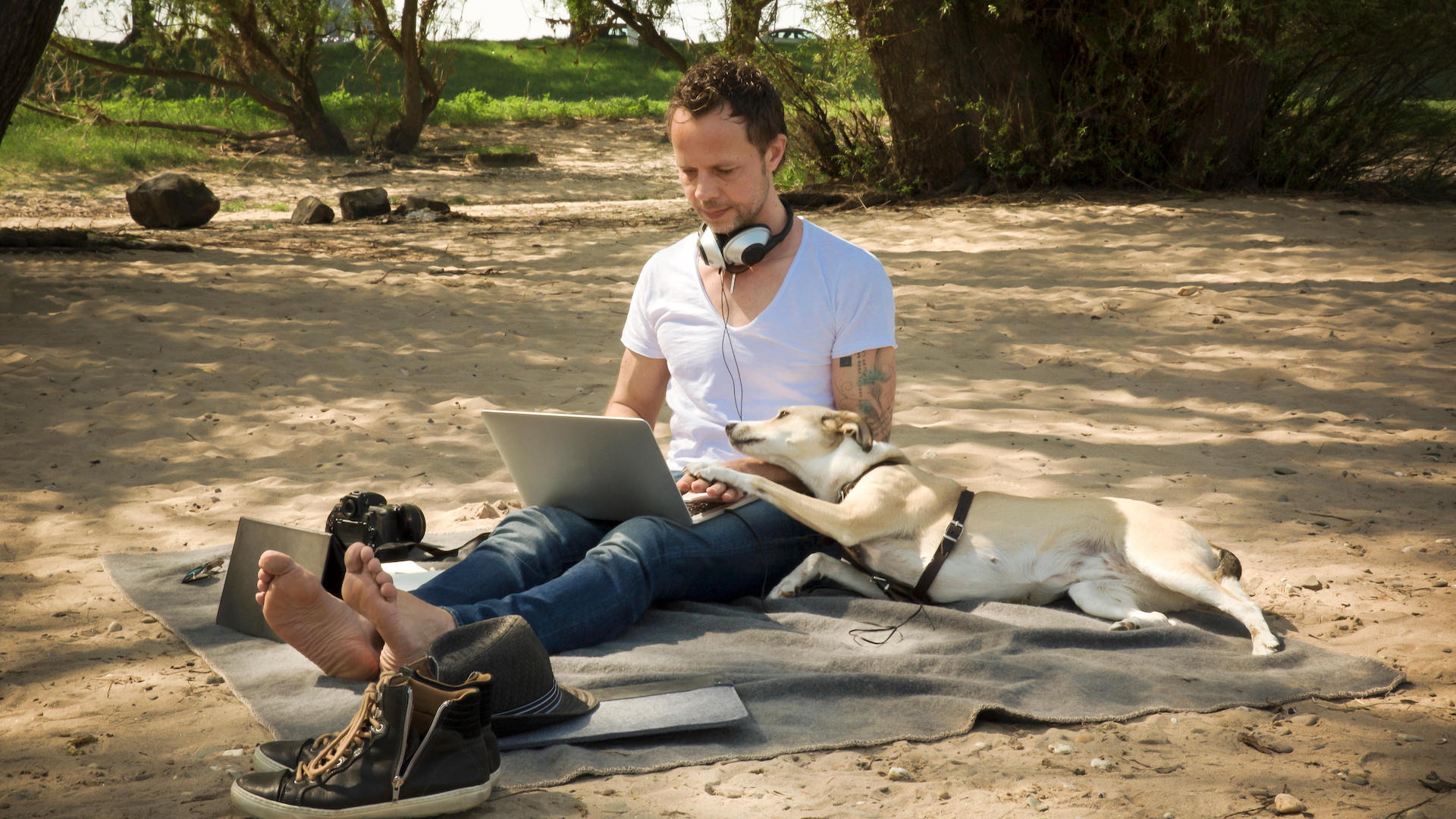
If your dog is making physical contact with you, such as leaning against your leg or sitting on your foot, it’s a sign he wants to express his love and bond with you.
It shows trust, while also providing them with a sense of comfort and security. All in all, it signifies he’s feeling affectionate, loving, and at ease close by your side.
8. Dancing and prancing
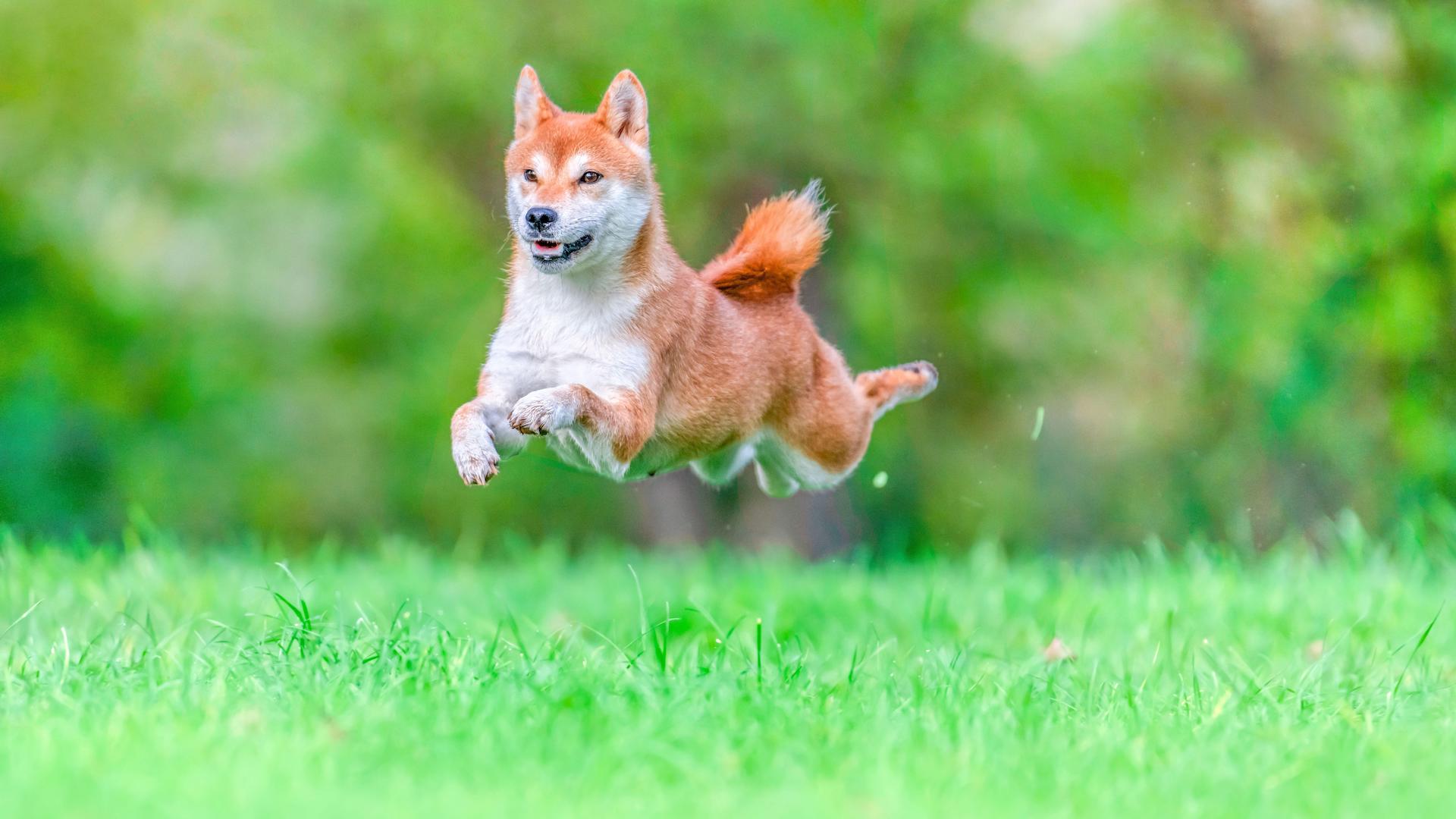
There’s no more joyful sight than a dog doing a happy dance or exalting in their own athleticism!
Many dogs will seem “particularly happy when you come home,” says Dr MacMillan, “running around, bouncing up, or wiggling around your feet.
“A sign of happiness is doing zoomies or happy, wiggly dancing.”
Over-exuberance may also be due to needing to let off pent-up energy, but it’s a rare creature that dashes around excitedly when they’re feeling low.
9. Sleeping well
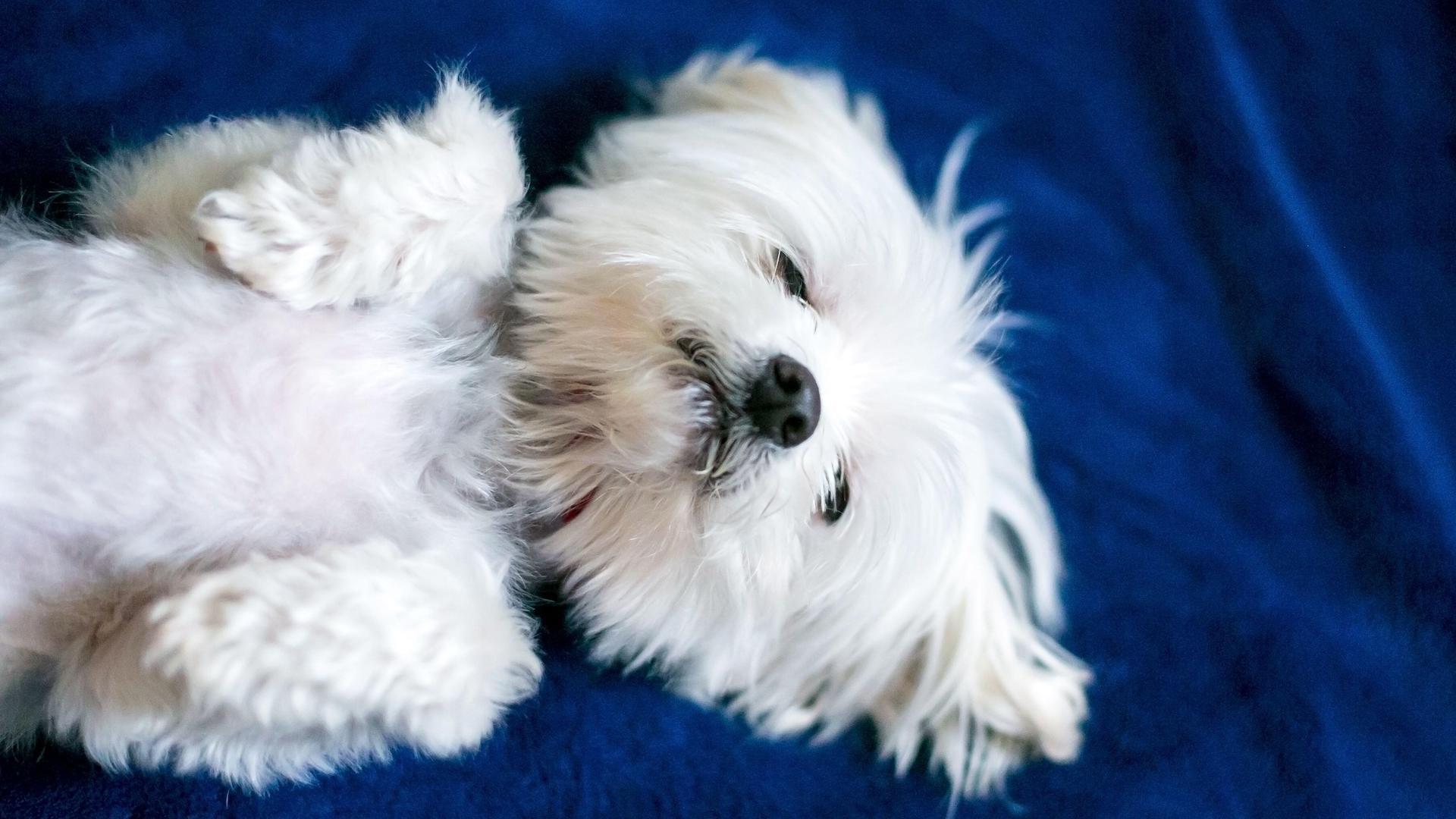
It’s normal for a healthy adult dog to sleep for around 14 hours, but each individual is different. If your dog’s sleep pattern is normal, and they appear content and well-behaved at home, rather than restless and pacing, it’s likely that they are feeling well-adjusted and calm.
10. Happy to socialize
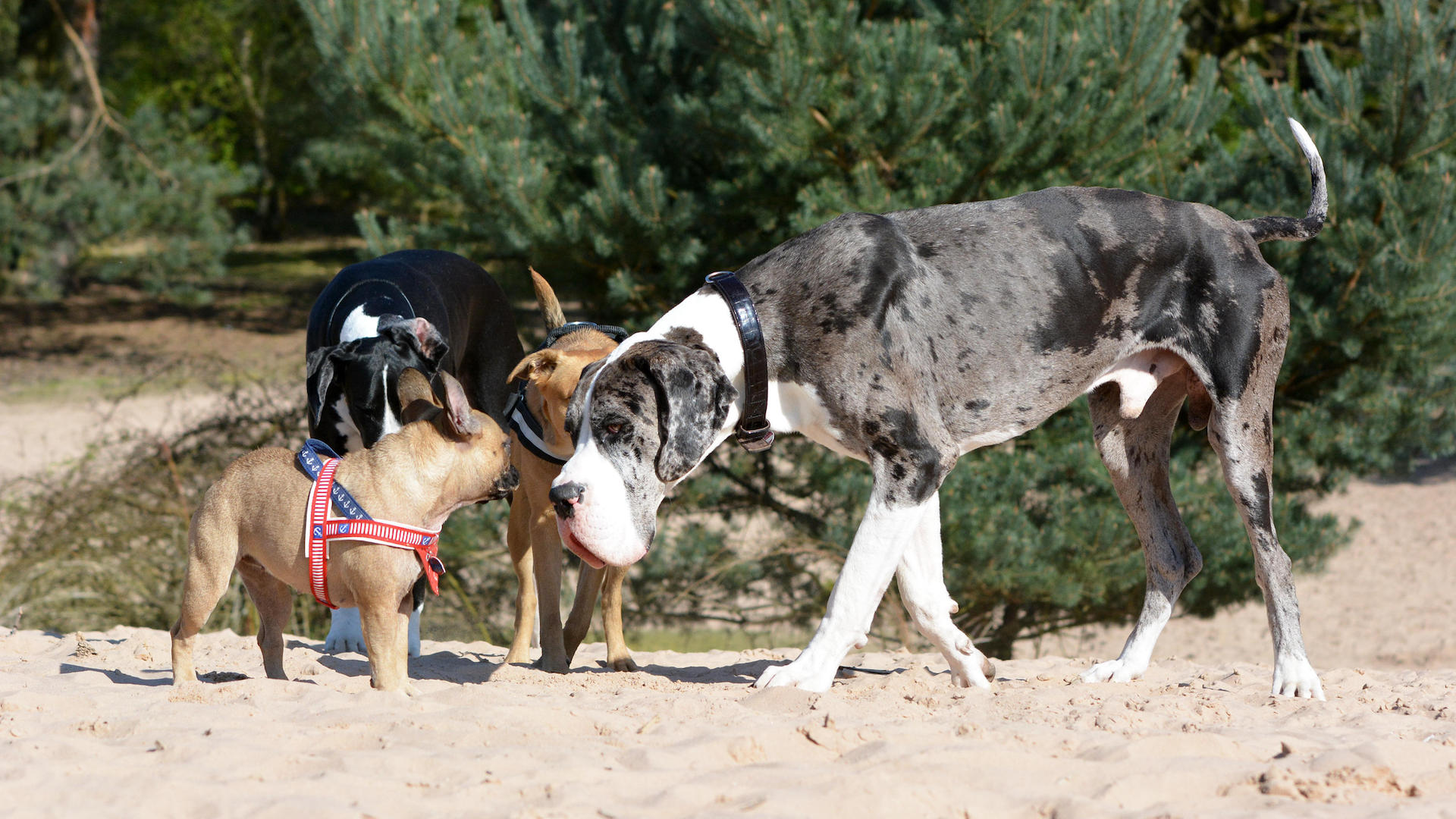
A happy dog relishes time to play, socialize, and meet other dogs. Many pups will rush to the car, hoping for an adventure. They are curious and friendly towards other dogs and people, being willing to interact.
If they seem uncharacteristically quiet or unwilling to take part in their usual activities, this should ring alarm bells that all is not well.
Read next: 10 signs your dog is stressed
Edited by Georgia Guerin and Alexis de Leaver.
Recent updates
This feature was last updated in April 2025.
Martha is an experienced journalist working in both print and digital media. She specializes in the canine, equine and rural sphere where she has covered a wide range of topics from cloning animals and the ingredients for a perfect yard dog, to helping owners find the best canine GPS trackers on the market. When she’s not busy writing about dogs and horses, she’ll be found either aboard a horse or looking after the menagerie of pets in her care.
